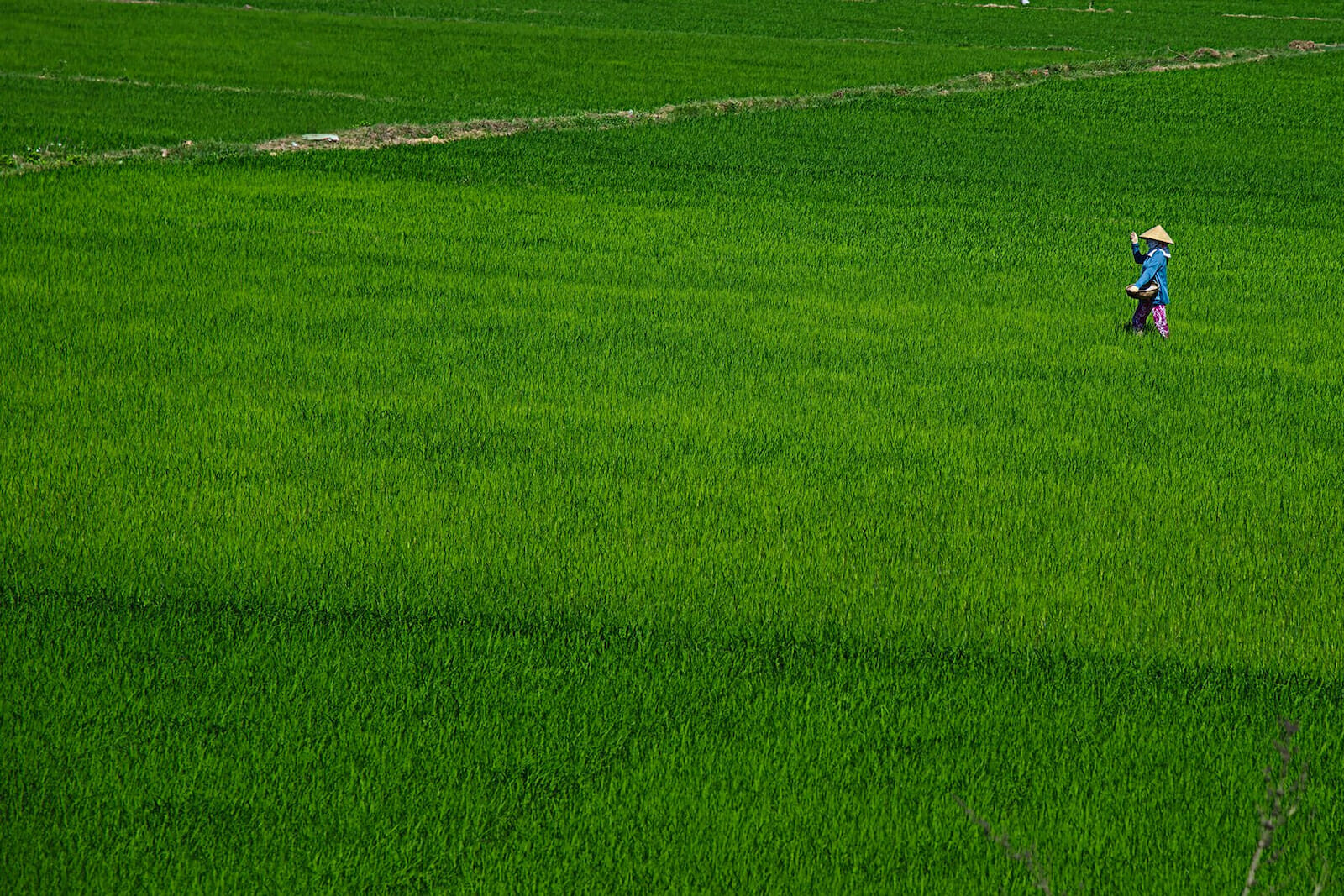
No Simple Thing: How Rice Will Reshape the World
“Have you eaten rice today?” In Asia this time-honored greeting is synonymous with ‘how are you?’ and is heard from flooded paddies to corporate boardrooms. A passing reminder of how essential this crop is for the 3.5 billion people whose day begins and ends with rice.
From India’s dusty plains to the metropolises of China to the Philippines’ emerald hills no common thread runs through Asia’s diverse cultures, mythologies, and languages like rice. Japanese meals are referred to as morning, noon, and evening rice, Indian babies are introduced to rice in elaborate annaprashan ceremonies, and the Chinese New Year is greeted with ‘May your rice never burn!’
Commonplace and celebrated, the importance of rice cannot be overstated and this will only increase in coming years, as the world turns to rice to feed a global population set to exceed 9 billion by mid-century. Though rice’s roots are deeply rooted in Asia’s valleys and terraced paddies its future is global, and it is uncertain.
As rapidly expanding populations demand more and more from this ancient crop to sustain a modern world the question is clear: can rice feed the world, and if so, how? The world is in chaos. A billion people are starving and riots break out across the globe, protestors are killed, cities are burning, stricken governments call out their armies to guard food stockpiles.
This is not some nightmare or vision of a future apocalypse…this is 2008. Population growth, high oil prices, biofuel subsidies, the suspected roots of the food crisis are many but when rice prices tripled in 2008 the World Bank believes a hundred million people were thrust into poverty and the world’s hungry increased by 75 million.
In Bangladesh, ten thousand workers rioted outside the capital and dozens were injured in the violence. Deadly rice riots spread across Haiti and violent protests engulfed the Ivory Coast. India banned most rice exports and Pakistan deployed the army to stop hungry locals from raiding fields and warehouses.
Though no single factor can bear sole responsibility for the crisis, people across the globe were provoked to act by the immediacy of an empty rice bowl, not abstract policy failures or free market blunders. According to the World Food Program, a billion people do not have enough food to live a healthy, active lifestyle and while worldwide food riots are rare, long-term food security relies on increasing production on a global scale to feed today’s 7 billion people and tomorrow’s 9 billion. The grain, which holds the promise to do just that, is rice.
Rice was first cultivated in Asia over eight thousand years ago and during that time has fed more people than any other crop, a title certain to be upheld in the coming years. Today, Asia’s 200 million farms produce 90% of the world’s rice and this humble crop dominates the purse strings and politics of major rice producers like Thailand where 40% of the population is employed in agriculture. Though the history of rice is very much the history of Asia, our hungry world requires food production to increase by 70% by 2050 and to meet this demand. Essentially, rice must go global as never before. Nowhere is this clearer than in Africa, a continent where the present need and future potential of rice is both great and uncertain.
From Hong Kong’s exclusive restaurants to Jakarta’s steaming street eateries rice is found everywhere in Asia, but until a few decades ago it was a rare dish for Africa’s city dwellers. All this has changed and today rice is Africa’s fastest growing staple with per capita consumption more than doubling from 17kg in 1970 to over 39kg today and this demand will only increase. Though good news for Asia’s exporting titans like Thailand and Vietnam, it is troubling for Sub-Saharan Africa where imported rice accounts for 46% of overall consumption and over 80% in countries such as Ghana, Gambia, and Benin.
In 2009 this rice gap cost the region $4 billion, money badly needed for developing domestic production, which currently produces per acre only half the rice of Asia’s farms. Even Nigeria, which grows 80% of its rice, spends $6 million a day on imported rice. These statistics are alarming considering the region’s population is expected to double from 770 million to 1.5-2 billion in the next forty years. Without significant changes in African rice production, the crisis of 2008 could be a grim prelude of things to come.
Facing great challenges, Africa also has great potential and through wise development and judicial use of its resources the continent could become one of the world’s major rice producing regions. According to the Africa Rice Center, a pan-African rice research organization, only 17% of the continent’s 875 million cultivatable hectares are being harvested and only 4% of its water used.
Additionally, new high yield, drought-resistant rice hybrids have been successfully introduced throughout most of Sub-Saharan Africa and in coming years could potentially offer food security and reduce poverty throughout the region. However, post-harvest losses due to bad roads and poor storage facilities coupled with inadequate supply chains claim as much as 40% of the rice crop and cost billions of dollars in lost revenue. Without major changes, these problems will persist.
Africa’s agricultural potential is immense but stymied by rutted roads and crumbling infrastructure. It would take a major investment to develop the continent’s resources, a fact not lost on China. With 22% of the world’s population but only 7% of its arable land, China’s ability to feed itself will be a question of growing importance as each year more productive farmland is lost due to rapid industrialization and over-planting (8.9 million hectares between 1995-2007 alone according to Yang Xiong at China’s ministry of agriculture).
Though China currently meets its domestic rice needs this may not be true in coming years as its urban population adopts a more Western-style diet, allocates more land for agriculturally intensive crops, and nearly triples its meat consumption from 25kg in 1985 to a projected 70kg by 2020.
Perhaps due to good business sense or just a pragmatic move to secure its long-term food demands, from 2006-2012 China has invested $3.6 billion in Africa’s agricultural economy. For example, in 2008 China invested $800 million in Mozambique’s farming sector, established agricultural schools throughout the country, stationed over a hundred specialists in country with the goal to raise rice production from 100,000 tons to 500,000 tons per year by 2014. In impoverished Guinea-Bissau, China helped construct eleven demonstration areas for growing paddy rice. The following year, the China Development Bank issued Angola a credit line of $1.2 billion to revive its agricultural sector and bolster food security.
While rumors of neocolonialism and exploitation of Africa’s resources are inevitable, perhaps Professor Li Anshan, a top Africa specialist at Beijing University, states the situation clearest: “Africans desperately need to modernize their agriculture both to ensure their food security and to earn hard currency by exporting it. China needs to deal with its growing food demand and Africa seems to offer the solution.”
The foundation of that food security and export economy will not be the traditional staples of yesteryear but the high yielding rice varieties of tomorrow. Eight thousand years ago, on the Yangtze’s green banks rice was grown, harvested, and became part of the culture and folktales of those early farmers until it was something more than white grains in a wood bowl. For two thousand years it spread down that river and across the world; today it is grown on every continent and feeds half the world.
Tomorrow and in decades to come rice will be even more important than all other staples because it has the potential to feed the world’s growing population and lift nations out of poverty. However, without care and forethought, such potential may never be achieved and that ancient question “have you eaten rice today?” may be difficult to answer.

